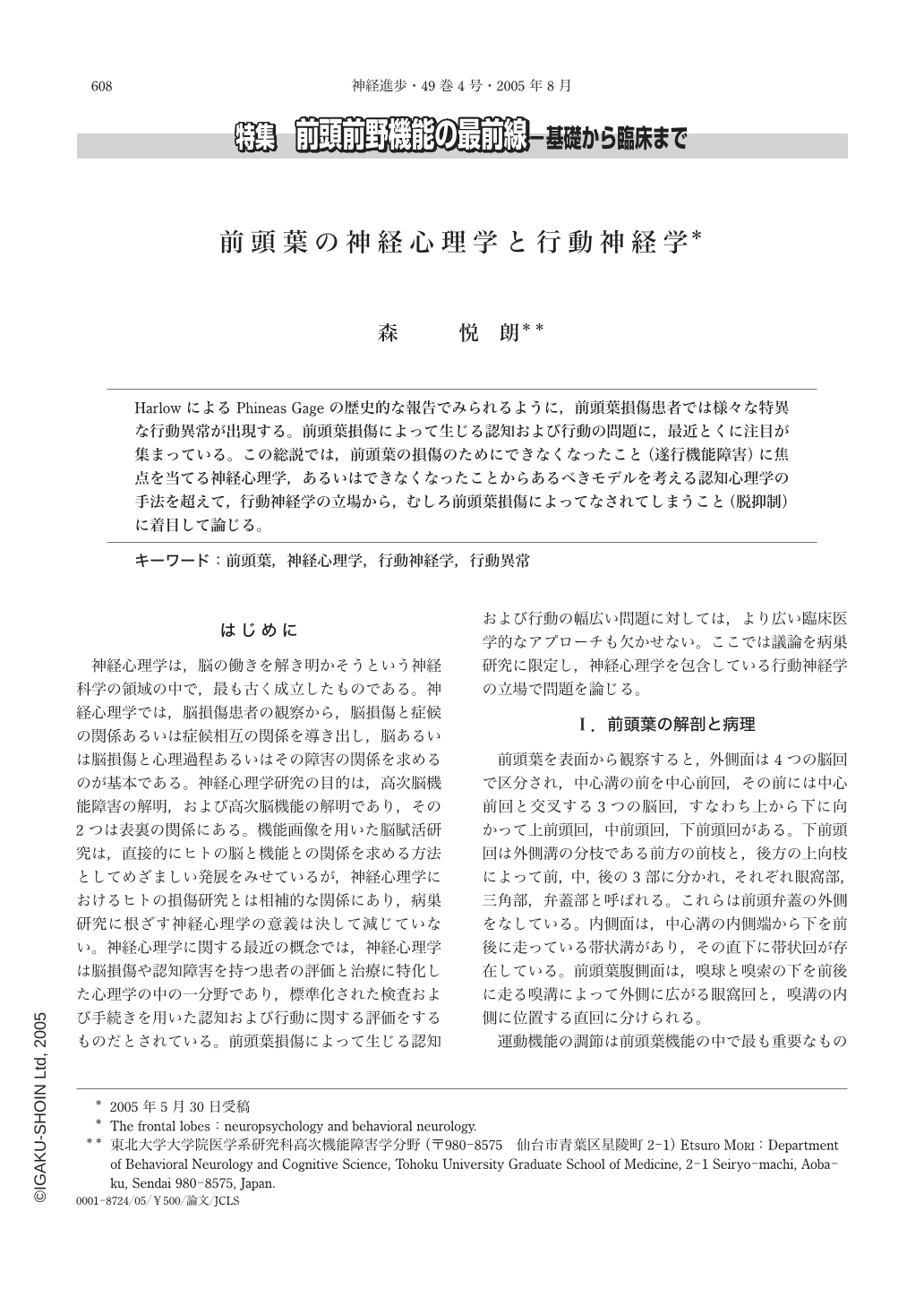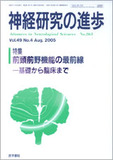Japanese
English
- 有料閲覧
- Abstract 文献概要
- 1ページ目 Look Inside
HarlowによるPhineas Gageの歴史的な報告でみられるように,前頭葉損傷患者では様々な特異な行動異常が出現する。前頭葉損傷によって生じる認知および行動の問題に,最近とくに注目が集まっている。この総説では,前頭葉の損傷のためにできなくなったこと(遂行機能障害)に焦点を当てる神経心理学,あるいはできなくなったことからあるべきモデルを考える認知心理学の手法を超えて,行動神経学の立場から,むしろ前頭葉損傷によってなされてしまうこと(脱抑制)に着目して論じる。
Cognitive impairment associated with frontal lobe lesions involve executive functions, which includes memory disorder, attention deficits, impairment of hypothesis-testing and abstract reasoning, and difficulty in initiation of cognitive activity. The neuropsychological paradigm is effective for these cognitive problems. However, it would be difficult for neuropsychology to approach to various motor and behavioral problems in patients with frontal lobe lesions. This review, mainly from the view of the behavioral neurology, focus on behavioral problems in patients with frontal lesions.
The highly controlled, volitional components of motor control are located in the frontal lobes on the dorsolateral surface including the premotor area and on the medial surface including the supplementary motor area and anterior cingulated gyrus. These include motor perseveration, motor impersistence, and hypokinesia(or motor neglect). They have difficulty initiating and maintaining action or behavior; they may continue the activity without stopping. The frontal lobes play the primary role in the inhibition of fundamental reflexes that were presumably inherited as part of primitive brain structures characteristic of the primate brain. The frontal lobes usually inhibit the primitive reflexes during childhood and adulthood. When the frontal lobe is lesioned, this inhibition is removed and the reflexes return. It can be possible to extend the knowledge in behavioral neurology to complex behavioral problems in patients with damage to the frontal lobe.
Patients with lesions of the ventromedial portion of the frontal lobes have a behavioral syndrome characterized by lack of originality, flexibility, and creativity, and a tendency to display inappropriate emotions and behavior. Furthermore, frontal lobe lesions result in a pervasive defect in planning and modulation of behavior. Human can suppress inborn behavioral traits, such as imitation and searching behavior, which appear in infants and primates, and inertia and stereotype, which are often seen in adults. The capability to react flexibly and diversely to the environment, released from such inborn behavioral traits, would be the reason why human is be elegant and intellectual. The frontal lobes are centrally involved in the inhibitory mechanism. Damage to the ventomedial frontal lobes, impairing the inhibitory mechanism, may lead reappearance of the inborn behavioral traits, similarly to reappearance of those primitive reflexes. Imitation behavior seen in patients with frontal damage corresponds to an innate imitating behavior. Instinctive grasp response, compulsive manipulation of tools, and utilization behavior after frontal lesions are extensions of instinctive searching behaviors. Stimulus-driven, stereotyped, and repetitive behaviors, which are often efficient in the real life, are also likely to belong innate patterns of behavior. When the inhibitory mechanism is damaged, stimulus-driven and often repetitive behaviors, such as pathological inertia, environmental dependency syndrome, and stereotyped behaviors may emerge. A study on the inhibitory mechanism would be a key to understand the neural mechanism for human behavior.

Copyright © 2005, Igaku-Shoin Ltd. All rights reserved.


